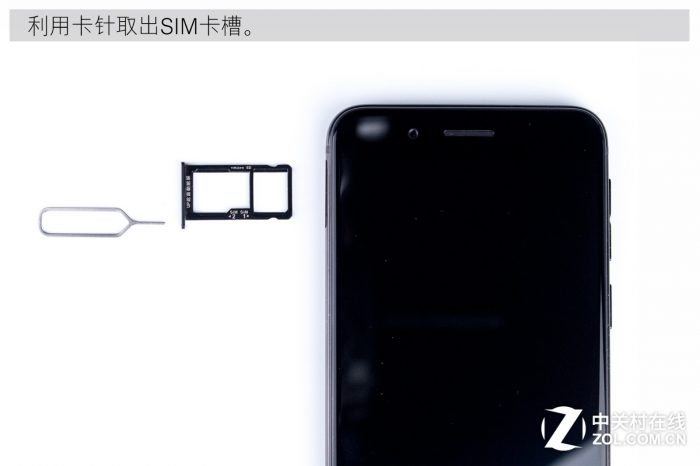As a product that first adopts a dual-screen design, the Yota YotaPhone 3 has received much popularity from the public due to its portability, appearance design, and feature function. Today, we will start the teardown on the Yota YotaPhone 3 to see its internal structure.
First of all, utilize a clip to remove the SIM card tray.

Then, use a screwdriver to take out two screws at the bottom. Next, we will start the teardown on the front of the smartphone.

After disconnecting most snap joints from the back cover, we can easily remove it. However, we should separate the back cover from the phone body gently to avoid breaking the wire connecting the secondary screen to the phone body.

To remove the back cover, we need to disconnect the cable which connects the back cover and the phone body. Before that, we need to remove the screws that secure the metal plate.
Remove the back cover. The sponge mat can be seen. Besides, we can see the vice board at the bottom, battery connector, screen connector on the front, and secondary screen connector (front the left to right at the bottom).

Two chips are found on the secondary screen on the phone’s back cover. One is Synaptics S32028, which is a touch chip for the secondary screen. This chip is also used as the main touch chip on the HTC One and other phones.

The other chip on the secondary screen is the MX25. We infer that the MX25 is a driver chip from the E-ink Carta’s second-generation e-ink display.

Now, we will continue the teardown. Disconnect the connector below the motherboard. We need to disconnect the battery connector first before removing other connectors.

The YotaPhone 3 has a 13MP front camera with an F/2.2 aperture. It doesn’t support automatic focus.

The front surface of the motherboard is covered by a large area of heat-dissipating copper. The motherboard has high space utilization and a compact design of components. The motherboard is in small size.

Chip list: PM8953, SKYWORKS 77645-11, SKYWORKS 77928-21.

Although the chip core area on the back of the motherboard adopts a bare design, this does not mean that the core chips do not have good electromagnetic shielding. In fact, the roll cage of the phone body is designed with a frame shielding barrier.

Chip list: Qualcomm Snapdragon 625 2.0GHz Adreno 506, Samsung KMRV50014M 128GB flash eMMC 5.0 (4GB LPDDR3), Qualcomm PMI8952 power management chip, 358762G 518227.

Use tweezers to take out the 12MP main camera, which supports Dual Pixel AF technology.

Then, disassemble the module at the bottom. Remove all the visible screws, which are divided into black and silver colors.

The loudspeaker module is connected to the vice board at the bottom via metal contacts. The module has no integration with other units.

The vice board

The smartphone sports a 3,280mAh battery instead of the 3000mAh battery announced by the official party. The battery has a capacity of 12.47Wh. The cell is provided by ATL.

Summary
The phone’s small motherboard gives the battery a big space area. However, the internal process that the Yota YotaPhone 3 uses needs to be further improved. For example, its vibrator’s connecting line is fixed by welding. In general, the phone is a much more competitive product if you prefer portable e-book reading.





